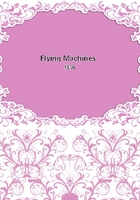
第25章
It is a mistaken idea that flying machines must be operated at extreme altitudes. True, under the impetus of handsome prizes, and the incentive to advance scientific knowledge, professional aviators have ascended to considerable heights, flights at from 500 to 1,500 feet being now common with such experts as Farman, Bleriot, Latham, Paulhan, Wright and Curtiss. The altitude record at this time is about 4,165 feet, held by Paulhan.
One of the instructions given by experienced aviators to pupils, and for which they insist upon implicit obeyance, is:
"If your machine gets more than 30 feet high, or comes closer to the ground than 6 feet, descend at once." Such men as Wright and Curtiss will not tolerate a violation of this rule. If their instructions are not strictly complied with they decline to give the offender further lessons.
Why This Rule Prevails.
There is good reason for this precaution. The higher the altitude the more rarefied (thinner) becomes the air, and the less sustaining power it has. Consequently the more difficult it becomes to keep in suspension a given weight. When sailing within 30 feet of the ground sustentation is comparatively easy and, should a fall occur, the results are not likely to be serious. On the other hand, sailing too near the ground is almost as objectionable in many ways as getting up too high. If the craft is navigated too close to the ground trees, shrubs, fences and other obstructions are liable to be encountered.
There is also the handicap of contrary air currents diverted by the obstructions referred to, and which will be explained more fully further on.
How to Make a Start.
Taking it for granted that the beginner has familiarized himself with the manipulation of the machine, and especially the control mechanism, the next thing in order is an actual flight. It is probable that his machine will be equipped with a wheeled alighting gear, as the skids used by the Wrights necessitate the use of a special starting track. In this respect the wheeled machine is much easier to handle so far as novices are concerned as it may be easily rolled to the trial grounds. This, as in the case of the initial experiments, should be a clear, reasonably level place, free from trees, fences, rocks and similar obstructions with which there may be danger of colliding.
The beginner will need the assistance of three men.
One of these should take his position in the rear of the machine, and one at each end. On reaching the trial ground the aviator takes his seat in the machine and, while the men at the ends hold it steady the one in the rear assists in retaining it until the operator is ready. In the meantime the aviator has started his motor. Like the glider the flying machine, in order to accomplish the desired results, should be headed into the wind.
When the Machine Rises.
Under the impulse of the pushing movement, and assisted by the motor action, the machine will gradually rise from the ground--provided it has been properly proportioned and put together, and everything is in working order. This is the time when the aviator requires a cool head, At a modest distance from the ground use the control lever to bring the machine on a horizontal level and overcome the tendency to rise. The exact manipulation of this lever depends upon the method of control adopted, and with this the aviator is supposed to have thoroughly familiarized himself as previously advised in Chapter XI.
It is at this juncture that the operator must act promptly, but with the perfect composure begotten of confidence. One of the great drawbacks in aviation by novices is the tendency to become rattled, and this is much more prevalent than one might suppose, even among men who, under other conditions, are cool and confident in their actions.
There is something in the sensation of being suddenly lifted from the ground, and suspended in the air that is disconcerting at the start, but this will soon wear off if the experimenter will keep cool. A few successful flights no matter how short they may be, will put a lot of confidence into him.
Make Your Flights Short.
Be modest in your initial flights. Don't attempt to match the records of experienced men who have devoted years to mastering the details of aviation. Paulhan, Farman, Bleriot, Wright, Curtiss, and all the rest of them began, and practiced for years, in the manner here described, being content to make just a little advancement at each attempt. A flight of 150 feet, cleanly and safely made, is better as a beginning than one of 400yards full of bungling mishaps.
And yet these latter have their uses, provided the operator is of a discerning mind and can take advantage of them as object lessons. But, it is not well to invite them. They will occur frequently enough under the most favorable conditions, and it is best to have them come later when the feeling of trepidation and uncertainty as to what to do has worn off.